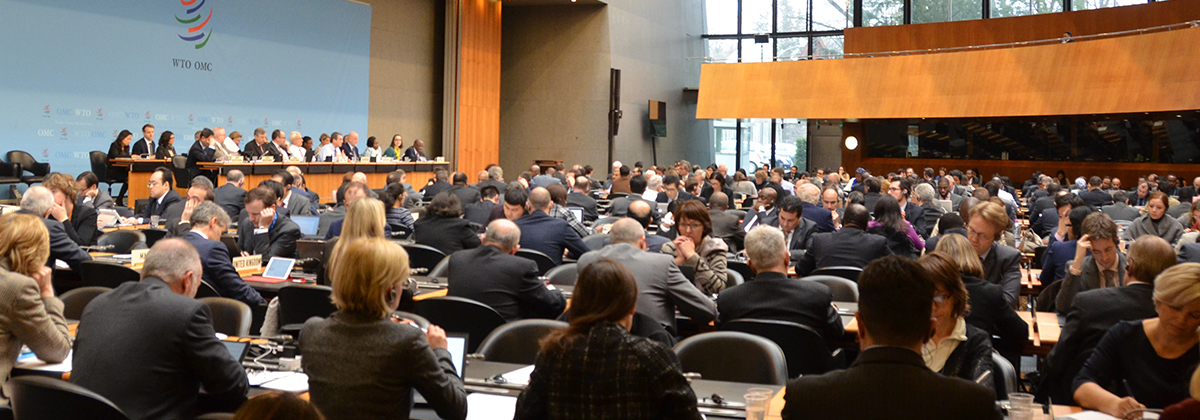Understanding the WTO
The first step is to talk. Essentially, the WTO is a place where member governments go, to try to sort out the trade problems they face with each other. At its heart are the WTO agreements, negotiated and signed by the bulk of the world’s trading nations. But the WTO is not just about liberalizing trade, and in some circumstances its rules support maintaining trade barriers — for example to protect consumers, prevent the spread of disease or protect the environment.

CONTENTS
back to topBasics
The WTO was born out of negotiations; everything the WTO does is the result of negotiations.
- What is the World Trade Organization?
- Principles of the trading system
- The case for open trade
- The GATT years: from Havana to Marrakesh
- The Uruguay Round
back to top
The agreements
The WTO is ‘rules-based’; its rules are negotiated agreements.
- Overview: a navigational guide
- Tariffs: more bindings and closer to zero
- Agriculture: fairer markets for farmers
- Standards and safety
- Textiles: back in the mainstream
- Services: rules for growth and investment
- Intellectual property: protection and enforcement
- Anti-dumping, subsidies, safeguards: contingencies, etc
- Non-tariff barriers: red tape, etc
- Plurilaterals: of minority interest
- Trade policy reviews: ensuring transparency
back to top
Settling disputes
The priority is to settle disputes, not to pass judgement.
back to top
Cross-cutting and new issues
Subjects that cut across the agreements, and some newer agenda items.
The WTO’s work is not confined to specific agreements with specific obligations. Member governments also discuss a range of other issues, usually in special committees or working groups. Some are old, some are new to the GATT-WTO system. Some are issues in their own right, some cut across several WTO topics. Some could lead to negotiations.
They include:
- Regionalism: friends or rivals?
- The environment: a new high profile
- Investment, competition, procurement, simpler procedures
- Electronic commerce
- Labour standards: consensus, coherence and controversy
back to top
The Doha agenda
The work programme lists 21 subjects.
back to top
Developing countries
How the WTO deals with the special needs of an increasingly important group.
back to top
The Organization
The WTO is ‘member-driven’, with decisions taken by consensus among all member governments.
- Whose WTO is it anyway?
- Organization chart
- Membership, alliances and bureaucracy
- Secretariat chart
- Special policies
- Members list
- Least-developed countries list
back to top
Abbreviations
Share
A word of caution: the fine print
While every effort has been made to ensure the accuracy of the texts in these introductory pages, they cannot be taken as an official legal interpretation of the agreements.
In addition, some simplifications are used in order to keep the text simple and clear.
In particular, the words “country” and “nation” are frequently used to describe WTO members, whereas a few members are officially “customs territories”, and not necessarily countries in the usual sense of the word (see list of members). The same applies when participants in trade negotiations are called “countries” or “nations”.
Where there is little risk of misunderstanding, the word “member” is dropped from “member countries (nations, governments)”, for example in the descriptions of the WTO agreements. Naturally, the agreements and commitments do not apply to non-members.
In some parts of the text, GATT is described as an “international organization”. The phrase reflects GATT’s de facto role before the WTO was created, and it is used simplistically here to help readers understand that role. As the text points out, this role was always ad hoc, without a proper legal foundation. International law did not recognize GATT as an organization.
For simplicity, the text uses the term “GATT members”. Officially, since GATT was a treaty and not a legally-established organization, GATT signatories were “contracting parties”.
And, for easier reading, article numbers in GATT and GATS have been translated from Roman numbers into European digits.